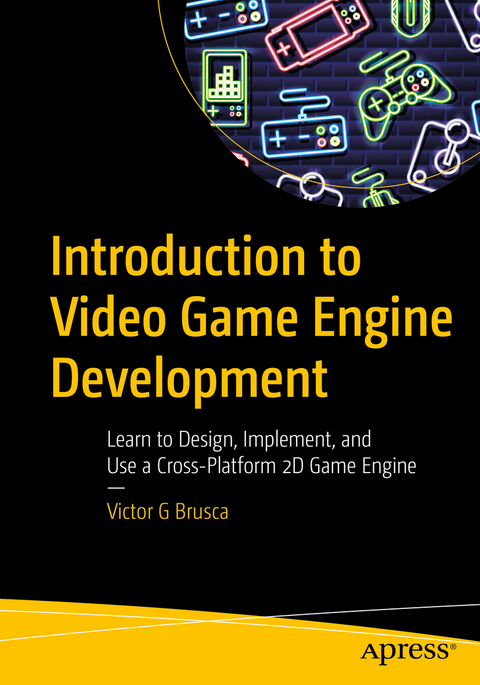
Introduction to Video Game Engine Development
Apress (Verlag)
978-1-4842-7038-7 (ISBN)
Introduction to Video Game Engine Development reviews the design and implementation of a 2D game engine in three parts. Part 1 covers the low-level API class by class. You’ll see how to abstract lower-level functionality and design a set of classes that interact seamlessly with each other. You’ll learn how to draw objects, play sounds, render text, and more. In Part 2, you’ll review the mid-level API that is responsible for drawing the game, loading resources, and managing user input. Lastly, in Part 3, you’ll build a game from the ground up following a step-by-step process using the 2D game engine you just reviewed.
On completing this book, you’ll have a solid foundation in video game engine design and implementation. You’ll also get exposure to building games from scratch, creating the solid foundation you’ll need to work with more advanced game engines, and industry tools, that require learning complex software, APIs, and IDEs.
What You Will Learn
Gain experience with lower-level game engine APIs and abstracting framework functionality
Write application-level APIs: launching the game, loading resources, settings, processing input, and more
Discover cross-platform APIs in the game engine projects written in both Java and C#/MonoGame
Develop games with an SDK-based game engine and simplified tool chain focused on direct control of the game through code
Master creating games by using the game engine to build a game from the ground up with only code and an IDE
Who This Book Is For
Those of you out there with some programming experience, moderate to advanced, who want to learn how to write video games using modern game engine designs.
Victor Brusca is an experienced software developer specializing in building cross-platform applications and APIs. He regards himself as a self-starter with a keen eye for detail, an obsessive protection of systems/data, and a desire to write well-documented, well-encapsulated code. With over 14 years' software development experience, he has been involved in game and game engine projects on J2ME, T-Mobile SideKick, WebOS, Windows Phone, Xbox 360, Android, iOS, and web platforms.
Chapter 1: MmgBase API Introduction.- Chapter 2: Base Classes.- Chapter 3: Helper Classes.- Chapter 4: Other Classes.- Chapter 5: Advanced Classes.- Chapter 6: Widget Classes.- Chapter 7: Animation Classes.- Chapter 8: Game Screen Classes.- Chapter 9: MmgCore API Introduction.- Chapter 10: Static Main Entry Point.- Chapter 11: Dynamic Settings.- Chapter 12: Event Handlers.- Chapter 13: Resource Loading.- Chapter 14: Game Screens.- Chapter 15: Game Build Introduction.- Chapter 16: PongClone Project Setup.- Chapter 17: PongClone Main Menu Screen.- Chapter 18: PongClone Game Screen.- Chapter 19: Conclusion.
| Erscheinungsdatum | 01.03.2021 |
|---|---|
| Zusatzinfo | 36 Illustrations, black and white; XXIII, 382 p. 36 illus. |
| Verlagsort | Berkley |
| Sprache | englisch |
| Maße | 178 x 254 mm |
| Themenwelt | Mathematik / Informatik ► Informatik ► Programmiersprachen / -werkzeuge |
| Informatik ► Software Entwicklung ► Spieleprogrammierung | |
| Schlagworte | Application-level APIs • building games • Cross-platform APIs • C#/VisualStudio/Monogame • Game Design • Game Development • Game Engine • Game engine design • graphics • IDES • Java • Java/Netbeans/Swing • source code |
| ISBN-10 | 1-4842-7038-X / 148427038X |
| ISBN-13 | 978-1-4842-7038-7 / 9781484270387 |
| Zustand | Neuware |
| Informationen gemäß Produktsicherheitsverordnung (GPSR) | |
| Haben Sie eine Frage zum Produkt? |
aus dem Bereich


